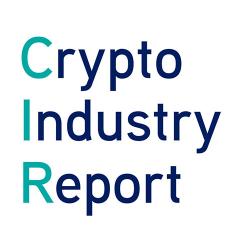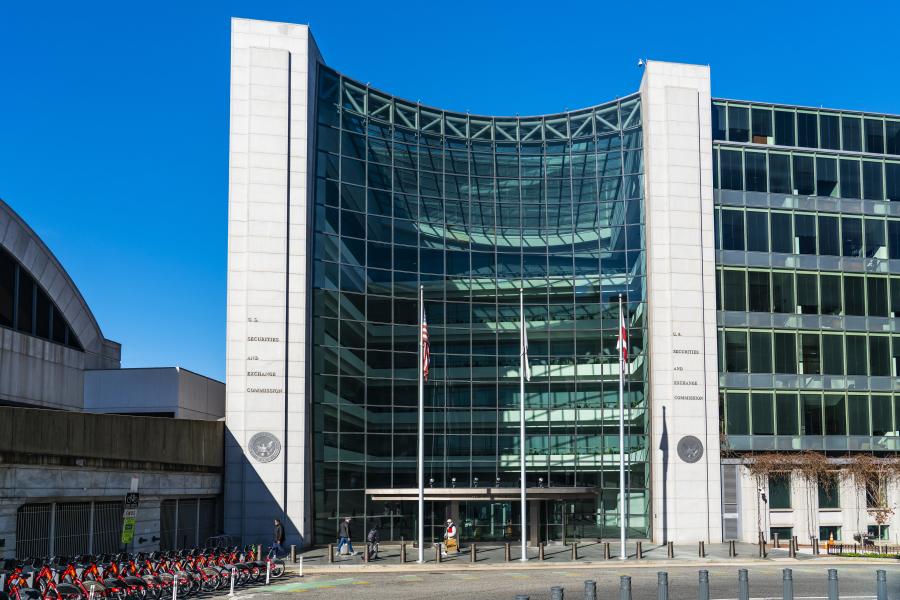The Merge has happened. What are the takeaways?
This week, our blockchain experts assessed the following topics:
- The Merge has happened. What are the takeaways?
- Post-Merge is pre-Merge of Custody and Staking
- Regulatory strides are being made
- Bear Markets are for building (and buying?)
Our bi-weekly Crypto Industry Report provides you with valuable information on the global crypto industry – picked and analysed by our blockchain experts.
The Merge has happened. What are the takeaways?
The long-awaited Ethereum Merge finally shipped on September 15, 2022, fully turning Ethereum into a Proof-of-Stake (PoS) blockchain. It commenced at 6:43 a.m. UTC and attracted a live audience of over 41,000 people on YouTube that watched as the significant event unfolded. The mainnet and PoS Beacon Chain merged successfully without a hitch, but it was not a small task. “The metaphor that I use is this idea of switching out an engine from a running car,” Justin Drake, a researcher at the Ethereum Foundation, said describing the Ethereum Upgrade.
Most excitingly in the eyes of many, ETH is now an eco-friendly cryptocurrency post-Merge since the transition to PoS has reduced Ethereum’s energy consumption by approximately 99.95%. PoS runs on low-powered devices (full nodes) hence the energy demand is low. With the previous consensus mechanism (Proof-of-Work ), Ethereum’s total annualised power consumption was nearly equal to that of Finland, and its carbon footprint was said to be similar to that of Denmark.
Another important fact is that the Ether supply has fallen significantly. According to data on Ultra Sound Money, Ethereum’s overall supply decreased by 203.86 ETH at 8:48 a.m., 2 hours and 5 minutes after the Merge. So, while Ether turned deflationary in the first few hours after the update, supply later started to become inflationary again over the next few days. Critics pointed out that Ethereum is not yet deflationary, calling the Merge a failure. However, people familiar with how Ethereum works should have known that Ether only turns deflationary, if network usage reaches a certain level, making it possible for the burning mechanism to eclipse Ethereum’s issuance. And yes, compared to PoW, Ethereum’s supply has since dropped more than 80%.
As expected, the Merge also led to the creation of an Ethereum fork called ETHPOW. This fork has maintained the Proof-of-Work (PoW) consensus mechanism. It went live shortly after the completion of the Merge, but it’s been having a rough start. Users reportedly had issues accessing the ETHPOW network because it was using a chain ID that Smart Bitcoin Cash testnet has already taken. Moreover, according to blockchain security firm Blocksec, an attacker exploited the chain ID issue on Gnosis Chain’s Omni Bridge, allowing them to harvest ETHW and other tokens. Since September 15, the price of ETHW has dwindled from a high of $60.68 to $5.77 as of September 20.
Last but not least, there was talk that the Ethereum’s shift to PoS may draw the Securities and Exchange Commission’s (SEC) attention. Projects that permit holders to stake their crypto may have to take the Howey test to determine if their asset is a security or not, as per a statement by SEC chairman Gary Gensler. Staking results in “the investing public anticipating profits based on the efforts of others,” according to Gensler. For some, this statement right after the Merge is proof that the SEC may soon declare PoS cryptocurrencies as securities. Others wouldn’t rush to that conclusion pointing to the fact that the regulator had previously said ETH is not a security. It is yet to be seen, whether the SEC’s position will change, now that Ethereum as completed its transition to PoS.
Post-Merge is pre-Merge of Custody and Staking
The implementation of the Merge will most likely accelerate staking, resulting in a merge of custody and staking. Formerly, clients paid custody fees to service providers for the safekeeping of their digital assets. Now, Ethereum’s switch to staking could put additional pressure to the traditional custody-only-business, because investors can access the same service and earn staking rewards in the process. This naturally leads to a shift from custody services to staking, a change that’s possible without downsides — at least from a client’s point of view.
Nevertheless, this shift may not be a small feat as regulators crack down on crypto custody providers. For instance, some US banks are rethinking their crypto custody services because of the SEC’s crypto custody accounting rules. Traditionally, banks provide custody services, but the assets do not appear on their balance sheet since they don’t own them. However, the SEC says crypto assets should be treated as both liabilities and assets of the company providing crypto custody services because of the risk involved in safeguarding them. This affects US banks since they have to comply with Basel III rules, which give an astronomically high-risk weighting to crypto assets, making it quite impossible to hold these digital assets.
It will be interesting to see, how this staking situation evolves. On the one hand, clients will be pushing for staking services, while the regulation still makes it hard for banks to realise such a service. As a matter of fact, regulators in other jurisdictions are also clamping down on staking. Case in point, Thailand’s SEC has proposed regulations to ban crypto staking and lending businesses to protect investors from the associated risks.
Regulatory strides are being made
The day after the Ethereum Merge occurred, the White House published the first comprehensive crypto framework that guides the responsible development of crypto assets. It follows a March 9 presidential executive order asking government agencies to examine cryptocurrencies and report their findings. Combined, the reports create a framework that encourages the SEC and the Commodity Futures Trading Commission (CFTC) “to aggressively pursue investigations and enforcement actions against unlawful practices in the digital assets space.”
Furthermore, the agencies recommend the creation of a framework to regulate non-bank payment providers and reduce the environmental impact of digital assets. The Department of Energy and other agencies will consider tracking the environmental effects of cryptocurrencies and develop performance standards, as reported in the official statement. According to Brian Deese, the director of the National Economic Council, the framework may position the US as a leader in the management of crypto assets at home and abroad.
Across the Atlantic Ocean, Europe is also striving to take his digital asset regulation to the next level. The European Union is set to follow suit with its own legislation, Markets in Crypto Assets (MiCA). The regulation will make crypto companies with more than 15 million active users subject to supervision. NFTs may also be regulated in this legislation, which should be ready in six weeks as of September 1. MiCA will oversee digital assets and crypto service providers across the EU’s 27-member states.
Recently, this legislation got prominent examination. Binance CEO Changpeng Zhao (CZ) reckons the EU’s MiCA legislation will be a global regulatory standard that other countries can adopt. Moreover, he pointed out that the legislation will profit crypto businesses operating in the EU. “Instead of applying for 27 licenses, you just have to apply for one.”
Bear Markets are for building (and buying?)
The dire macro-economic situation has made it obvious. Equity markets and with them digital assets are in a bear market. Despite the prevailing bear market though, several companies are making major moves as they seek to secure a place in the crypto ecosystem. For instance, CME Group launched Ether options in response to rising demand for Ethereum derivatives ahead of the Merge. The options contracts complement CME’s ETH futures, whose average daily volume year-over-year climbed by 43%.
Other industry titans from the traditional world of finance are making their moves. Just recently, a group of prominent firms, including Fidelity Digital Assets, Citadel Securities, and Charles Schwab has teamed up to launch EDX, a crypto exchange that will enable investors to trade crypto assets. “The [industry consortium intends] to build market infrastructure that contributes to increased optionality for liquidity to facilitate a more efficient, secure, and cost-effective process for trading digital assets,” Fidelity Digital Assets told the press.
Interestingly enough, the firm isn’t stopping there. Fidelity Digital Assets’ parent company, Fidelity Investments, may soon permit individual investors to trade BTC on its brokerage platform. Presently, the financial services company enables institutional investors to trade bitcoin and corporate clients to add crypto assets to their 401(k) investment plans.
While Fidelity Digital Assets has been in crypto for quite a while, another company is increasing its stakes constantly. The publicly traded firm MicroStrategy has announced to raise up to $500 million to engage in another round of buying Bitcoin.
MicroStrategy is an avid buyer of bitcoin that’s continuously expanding its billion-dollar treasure chest. Earlier in September, the publicly-traded company filed a prospectus with the SEC that said it had agreed to sell up to $500 million in class A common stock and would use the net proceeds to acquire bitcoin. "We have not determined the amount of net proceeds to be used specifically for any particular purpose,” the filing stated.
Just days ago, the company bought 301 BTC for an estimated $6 million, bringing its total bitcoin holdings to 130,000. The previous purchase was made on June 28, 2022, when it purchased 480 bitcoin at around $10 million. MicroStrategy leads public companies that have added bitcoin to their balance sheets.
Interesting news is also coming form the NFT front. As a matter of fact, famous retail coffeehouse Starbucks is set to join other mainstream companies that have entered the crypto ecosystem with an NFT loyalty platform called Starbucks Odyssey. The NFT platform will build on the current loyalty program that allows customers to earn “stars,” giving them access to perks such as free drinks. Through Starbucks Odyssey, the company will build its community while enabling loyal customers to earn more rewards. Starbucks plans to launch the platform later this year.
Share post

Auch interessant

To be continued: SEC pushes back at Coinbase
SEC pushes back against Coinbase's claim of no regulatory jurisdiction, stating the crypto exchange knowingly violated securities laws. Meanwhile, Gemini, owned by the Winklevoss twins, files a lawsuit against Digital Currency Group and CEO Barry Silbert alleging fraud and deception following the collapse of a lending venture. The Bank for International Settlements survey reveals that 93% of central banks are working on Central Bank Digital Currencies (CBDCs) which are seen as potential geopolitical policy tools and a challenge to the dollar's dominance. The race for a Bitcoin ETF intensifies, with BlackRock refiling its application featuring Coinbase as the market surveillance partner, as the Grayscale Bitcoin Trust's discount to net asset value narrows, potentially indicating the transformation into a proper ETF.

BlackRock fever: The ETF filing spree and institutional appetite
BlackRock filed for a Bitcoin ETF with the SEC, inspiring similar applications from firms like WisdomTree, Invesco, and Fidelity, and boosting Bitcoin's value. Traditional finance institutions such as Fidelity and Nasdaq are showing increased interest in crypto, with moves towards exchange and custody services. The defunct crypto exchange FTX, under new CEO John Ray III, is planning a potential revival after recovering significant assets. Meanwhile, the IMF is developing a global CBDC platform for cross-border transactions and DAI, a major stablecoin, is diversifying its backing from USDC to include real-world assets.

SWIFT explores blockchain interoperability
SWIFT has partnered with Chainlink to experiment with leveraging its infrastructure for transferring tokenized value across blockchain networks. The trials will address interoperability, regulatory challenges, and operational drawbacks for financial institutions in a blockchain environment. Chainlink will provide connectivity between private and public blockchains. SWIFT's findings will be published later this year.

China wants an Internet 3.0, while Hong Kong gears up for crypto trading launch
China is striving for advancement in Internet 3.0 technologies, with Beijing's white paper outlining plans to invest in the development of the metaverse and Web3 tech such as non-fungible tokens, but not cryptocurrencies due to the country's previous ban. Meanwhile, Hong Kong is launching its new crypto trading regulations, allowing retail investors to participate from June 1, 2023, with exchanges like Huobi Hong Kong beginning to offer spot trading to retail and institutional clients. Furthermore, the Cybersecurity and Technology Crime Bureau of the Hong Kong Police Force is launching a metaverse platform, 'CyberDefender', to educate the public about potential threats and crime prevention in the metaverse.

BRC-20: Innovating on Bitcoin is the new cool
A new Bitcoin “token standard” called BRC-20 is the hottest thing right now in the crypto space. It was introduced in March 2023 by a pseudonymous person called Domo. Bitcoin Request for Comment 20 (BRC-20) is an experiment that brings fungible tokens to the Bitcoin blockchain using the Ordinals protocol. Ordinals rely on ordinal theory, enabling the identification and tracking of individual satoshis within Bitcoin's existing supply, while also allowing them to be inscribed (associated) with data. Through this technique, satoshis (sats) are given ordinal numbers starting with zero. Anyone can add a script file to a sat to create and transfer a BRC-20 token on the Bitcoin blockchain. BRC-20 tokens are created using three functions: deploy, mint, and transfer.

US versus EU: Giants fighting for regulatory clarity
It is official now: The European Parliament voted overwhelmingly in favour of Markets in Crypto Assets (MiCA), legislation that will guide the crypto sector in all 27 European Union member states. 517 parliament members voted for it, while 38 voted against it. This approval makes Europe the first continent with comprehensive rules for cryptocurrencies. Also, it means that all EU member states will have unified crypto regulations. So, if a crypto business is approved in one EU member country, it could easily expand operations to another member state. The EU’s milestone was lauded by Binance as well as Kraken and Coinbase.

Ethereum: Another milestone reached with the Shanghai Update
On April 12, 2023, Ethereum successfully executed the planned Shanghai update also known as Shapella. The upgrade allows validators to unstake their staked ETH and withdraw their rewards, as well as staked ether if chosen. Now that another level of uncertainty has waned for the biggest smart contract blockchain, this new feature could attract more investors to stake their ether.

CFTC versus Binance:
Clash of the titans
The world’s leading crypto exchange by volume, Binance, alongside its CEO, Changpeng Zhao, and ex-Chief Compliance Officer, Samuel Lim, are being sued by the US Commodity Futures Trading Commission (CFTC).

Stablecoin USDC briefly lost its
peg. What do we learn from this?
One of the top stablecoins by market cap, USD Coin (USDC), de-pegged briefly from the US dollar on March 11 following the collapse of Silicon Valley Bank (SVB). Circle, the stablecoin’s issuer, held $3.3 billion in USDC reserves with the bank, which caused panic as investors rushed to withdraw their funds, assuming USDC could implode because of insufficient backing. However, the amount represented less than 8% of the stablecoin’s reserves.

Ethereum Shanghai upgrade pushed to April: Will there be too much selling pressure?
Ethereum stakers have been eagerly awaiting the Shanghai upgrade, which will enable them to withdraw their staked ether. Stakers’ funds have been locked since Ethereum introduced the proof-of-stake Beacon Chain in December 2020. The upgrade was originally slated to take place sometime in March but was pushed by about two weeks to April during a recent execution layer meeting.